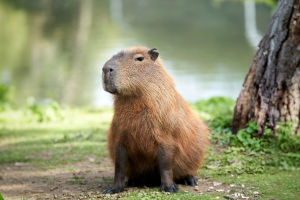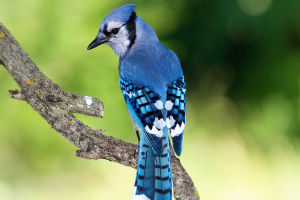The hoopoe is a striking and unique bird, well-known for its colorful appearance and interesting behaviors. Its long, pointed beak, which is black with a light brown base, stands out among other birds.
What sets this bird apart is its ability to open its beak when probing into the soil, thanks to its strong head muscles. This behavior allows it to catch insects and other food buried underground. Let's explore the hoopoe’s features, behaviors, and habitat!
Physical Characteristics
Weighing between 46-89 grams and measuring 25-32 cm in length, the hoopoe has a distinctive body structure. Its wingspan reaches 44-48 cm, which helps it perform strong, powerful flights. The hoopoe’s flight is unique, often described as a wave-like pattern, similar to a giant butterfly. This flight style occurs because the bird closes its wings partially at the end of each wingbeat. These adaptations help the hoopoe thrive in various environments, from grasslands to forests.
Sounds of the Hoopoe
The hoopoe is also known for its distinctive call, which is a three-syllable "oop-oop-oop." This sound is where both its English and scientific names are believed to come from. While the three-syllable call is most common, the bird can also produce two- or four-syllable calls. In the Himalayas, its call might be confused with that of the Himalayan cuckoo. Additionally, during courtship, female hoopoes make a unique panting sound.
Where Does the Hoopoe Live?
The hoopoe is widely distributed across Europe, Asia, North Africa, and the northern parts of Sub-Saharan Africa. Most populations in Europe and Northern Asia migrate southward to tropical regions during the winter. Birds that breed in Europe typically head to the Sahel region of Sub-Saharan Africa for the colder months. On the other hand, African hoopoes tend to remain year-round in their habitats. There have even been sightings of hoopoes as far as Alaska, where a specimen was recorded in 1975.
Habitat Preferences
When it comes to choosing a habitat, the hoopoe has two primary needs: a place with exposed or sparsely vegetated ground for feeding and vertical surfaces like trees, cliffs, or even walls to nest in. These conditions are often found in a wide variety of ecosystems, such as open woodlands, grasslands, and even abandoned caves. Due to this adaptability, the hoopoe can live in a broad range of habitats, making it an easily adaptable species.
Migration Patterns
In some regions, such as Sri Lanka and the Western Ghats, hoopoes migrate seasonally depending on rainfall. During migration, they may even appear in high-altitude areas. There is a famous account of a hoopoe being spotted at an altitude of 6,400 meters during an expedition to Mount Everest. The bird's migration habits are fascinating, as it often travels great distances to find the perfect environment.
Behavior and Ecology
One of the most interesting behaviors of the hoopoe is its sunbathing posture. It often spreads its wings and tail flat against the ground, with its head held high. While this may seem like a defensive posture, it is actually part of its daily routine, which also includes dust and sand bathing. These actions help the hoopoe stay clean and healthy. Additionally, it frequently engages in preening, ensuring that its feathers remain in top condition for flight and courtship displays.
The Fascinating Life of the Hoopoe
The hoopoe is a bird that captivates with its vibrant appearance and intriguing behaviors. Its distinctive calls, remarkable flight patterns, and seasonal migration make it a fascinating subject for nature enthusiasts. As a species that thrives in diverse habitats, the hoopoe offers a perfect example of the wonders of the natural world. Have you had the chance to spot a hoopoe during your travels? Share your experiences in the comments!
Lykkers, what do you think of the hoopoe’s unique qualities? If you find yourself in an area where these birds reside, keep your eyes peeled! There's nothing like witnessing this stunning bird in action.
Hoopoe facts: birds with stinkin' great accuracy | Animal Fact Files
Video by Animal Fact Files


